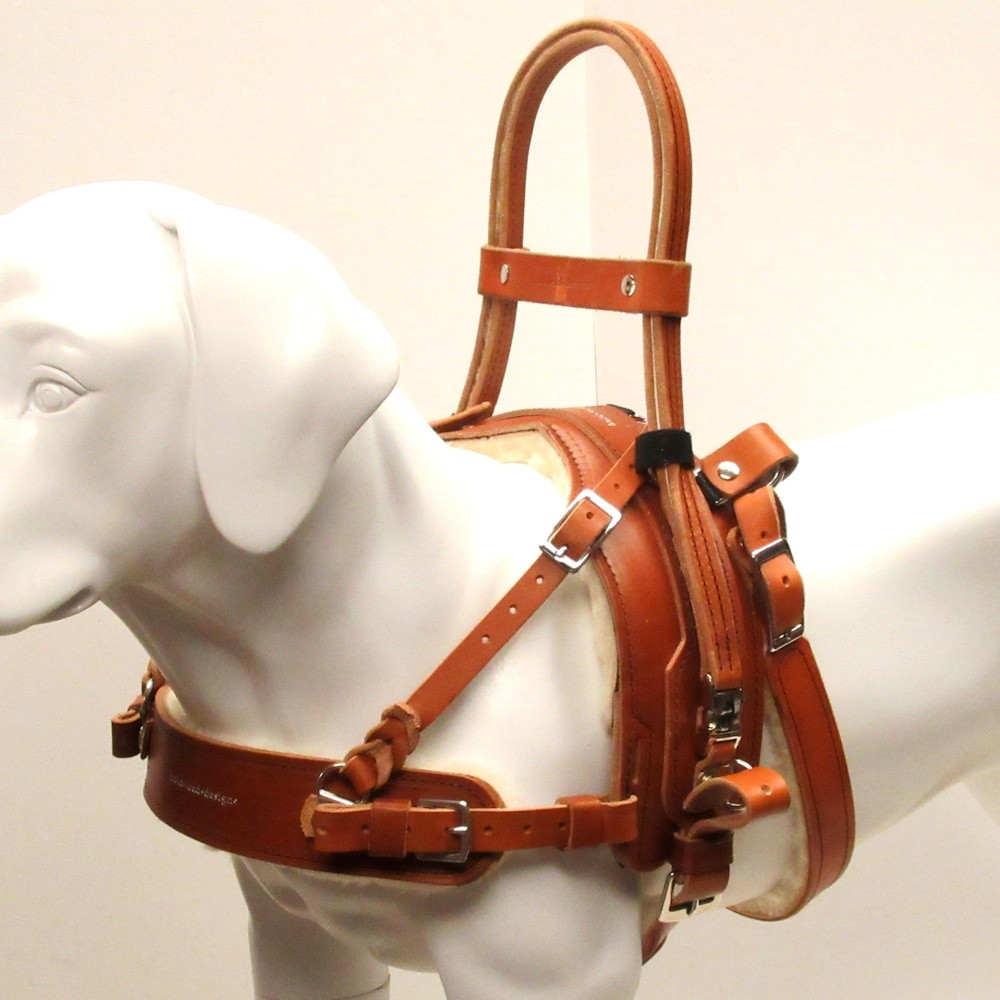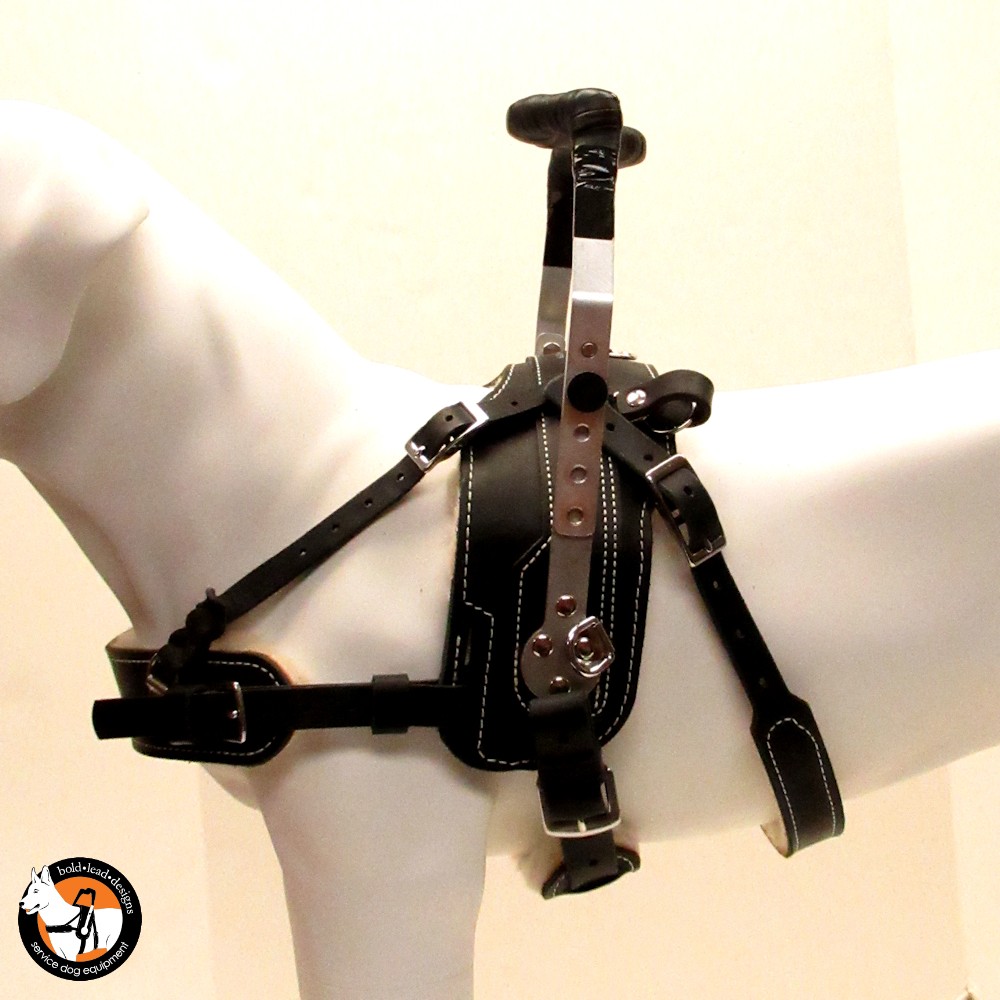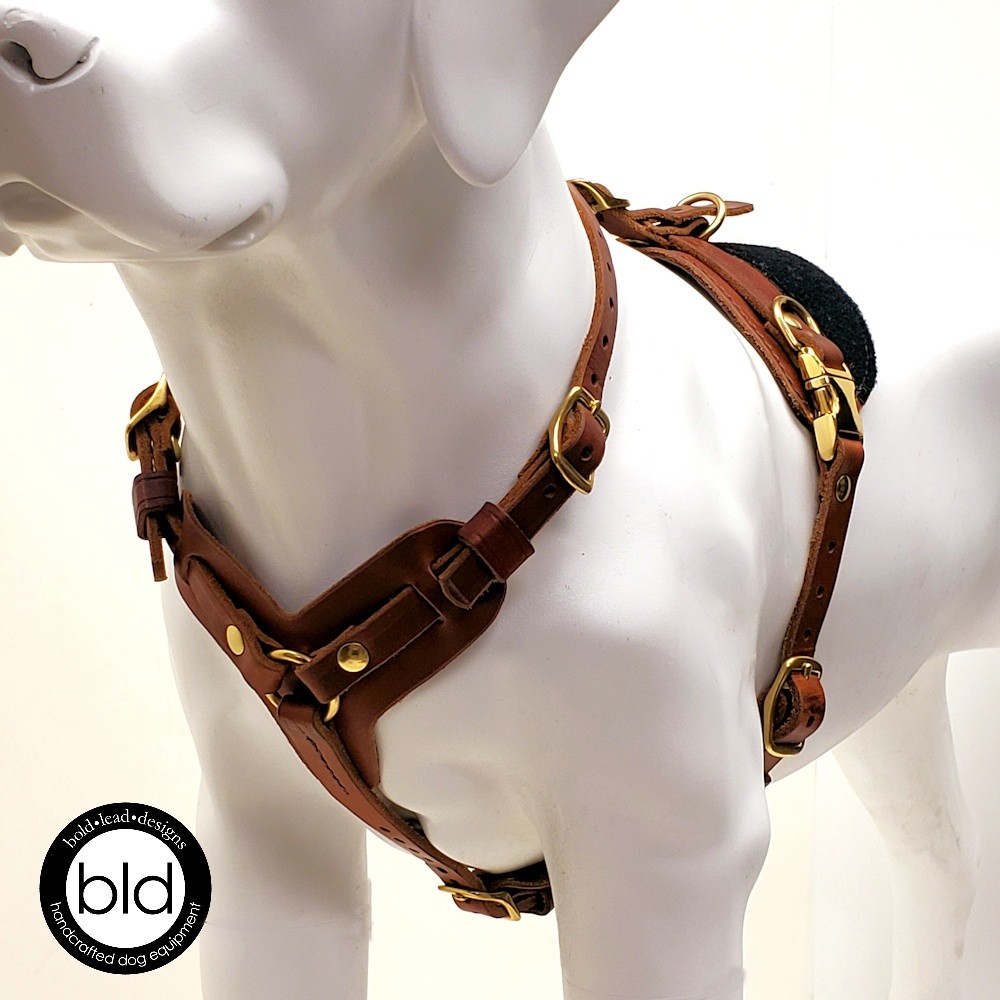Measuring for your custom harness
We’ve provided videos & documents to assist you with measuring for your custom harness.
If you have questions, call the workshop at (303) 856-3012 and we’ll be happy to assist.
Each harness has specific measuring instructions.
Click on the harness you are ordering:
Refitting and replacement straps and handles
Our modular harness designs make it easy to correct measuring errors, or to refit to a different dog. We’ve compiled a few resources to help you remeasure and find the right fit anytime it’s necessary.
- Determining the right handle height
- Fit adjustments within the Great Fit Guarantee period
- When buying a pre-owned or Bargain Sale harness
- Replacing straps
- Anytime a harness fit needs to be adjusted
Balance Assistance and Mobility Support Harnesses: Guides for girth and belly straps, rigid metal MSH handles, and leather handles are below.
Light Assistance Harness: Leather handles are the same as BAH and MSH; use the Guide to Leather Handles below. It’s best if you can tell us the how much taller or shorter you would the new LAH handle, compared to the existing one (IE: 2.5″ taller).
If you need to refit an Everyday Working or other parts of the Light Assistance Harness, please contact us and we’ll help you directly.

Everyday Working Harness
Measuring for this harness is pretty straight forward, enter the measurements when you place your order.
Please see the Light Assistance Harness video below; you only need to watch for the height and girth!
These two measures are shown in the LAH video, but you do not need to do any other measurements for the EWH. Disregard the rest of the video! Finally, it’s not shown in the video, but we want your dog’s neck size too – simply measure around the middle of your dog’s neck.
Provide the measurements when you order is placed. If you order online, enter the measurements before you “add to cart”. For phone and email orders, we’ll ask you for the basic measurements to be sure you get the right size.

Light Assistance Harness
Measuring tools:
- A cloth/tailor’s measuring tape is ideal because it is flexible.
- If you don’t have one, use a string for measuring around your dog’s body and then measure the string against a measuring tape or yard stick.
- A regular flat ruler is best for the width
- Hardbacked book
- Paper and Tape
You can measure the dog and person separately. The dog and harness user do NOT have to be together!
Getting Ready:
- It’s very important the handle(s) fit the person; please don’t guess at the handle heights.
- Take each measurement 2 or 3 times for accuracy. Each time may give you different results; this is normal, don’t panic. Try again and average the numbers.
- If your dog is nervous with a measuring tape, try using a leash around their body, then measure the leash separately.
- You may want a friend to help you, a helper is highly recommended. No helper? Smear something tasty on a paper plate and tape it to the wall at the dog’s eye level to keep him occupied while you measure him.
- For the dog’s height and person’s wrist/hand measurements, you can tape a piece of paper to the wall to mark the height.
- Take a look at the Anatomy Landmarks diagram to familiarize yourself with the terminology.
- Get out the very best treats you have, perhaps cheese, ham, or peanut butter! This is a great opportunity to have a helper bait your dog with a fistful of soft treats to keep your dog focused on trying to lick the food.
- Have the dog stand square and balanced when taking all measurements. (No sitting or lying down.) Keep the measuring tape snug.
- Start by finding your dog’s withers, or the top of the shoulder blades. The bones can be felt over the dog’s legs and shoulders. The shoulder blades angle forward, down to the shoulder joints.
- The tip of the sternum (or breastbone) is in the center of the dog’s chest, just below the base of the neck. There’s a lot of loose skin in this area; feel around until you locate the point of the breast bone, and both shoulder joints. Pro Tip: Pick your dog’s front leg up and move it around. Feel how the bones fit together, this can help locate the right areas, especially for thick coated dogs.


Instructions to Measure the Dog:
- Measure height from withers to the floor — blue line on diagram
• This measurement should be a straight, vertical line from the top of the shoulders to ground If using a flexible measuring tape, do not bend the tape over the dog.
• Place a book or other flat object across the shoulders if you need. We use a blue ruler in the photos. Additionally, you can ask your dog to stand next to a wall and mark his height on the paper taped to the wall (as shown in the photo on p. 9). - Measure the girth around the dog’s torso — yellow line on diagram
• This measurement goes around your dog’s ribs, just behind the front legs. Start just behind the withers and go down and around, under the deepest part of the dog’s chest and back around to the top.
• The measuring tape should be mostly vertical, forming a complete circle around the dog’s chest. Measure snugly but don’t squish your dog. (With long haired dogs, be sure you’re measuring the dog’s body, not just their floof!) - Over neck to breastbone — red line on diagram
• This measurement is similar to measuring a collar, but extends down to the dog’s breastbone.
• Place the measuring tape around the base of your dog’s neck. Bring the measuring tape together at the front of your dog’s chest, and pull it down to the point of the breastbone.
• Put the beginning of the measuring tape (at zero) on the tip of the breastbone, and tighten up the other side until it also meets the breastbone. The measuring tape needs to be quite snug, so pull the tape down firmly, see-sawing it back and forth a bit to settle in to the dog’s body. Mark where the tape measure meets the breastbone.
• Repeat this one several times, letting the dog rest or play in between.





